Knowing (film)
8 /10 2 Votes
33% Rotten Tomatoes 41% Metacritic Genre Action, Drama, Mystery Duration Language English | 6.2/10 IMDb 4/4 Roger Ebert Country United StatesUnited Kingdom | |||||||||||||||||||||||||||||||||
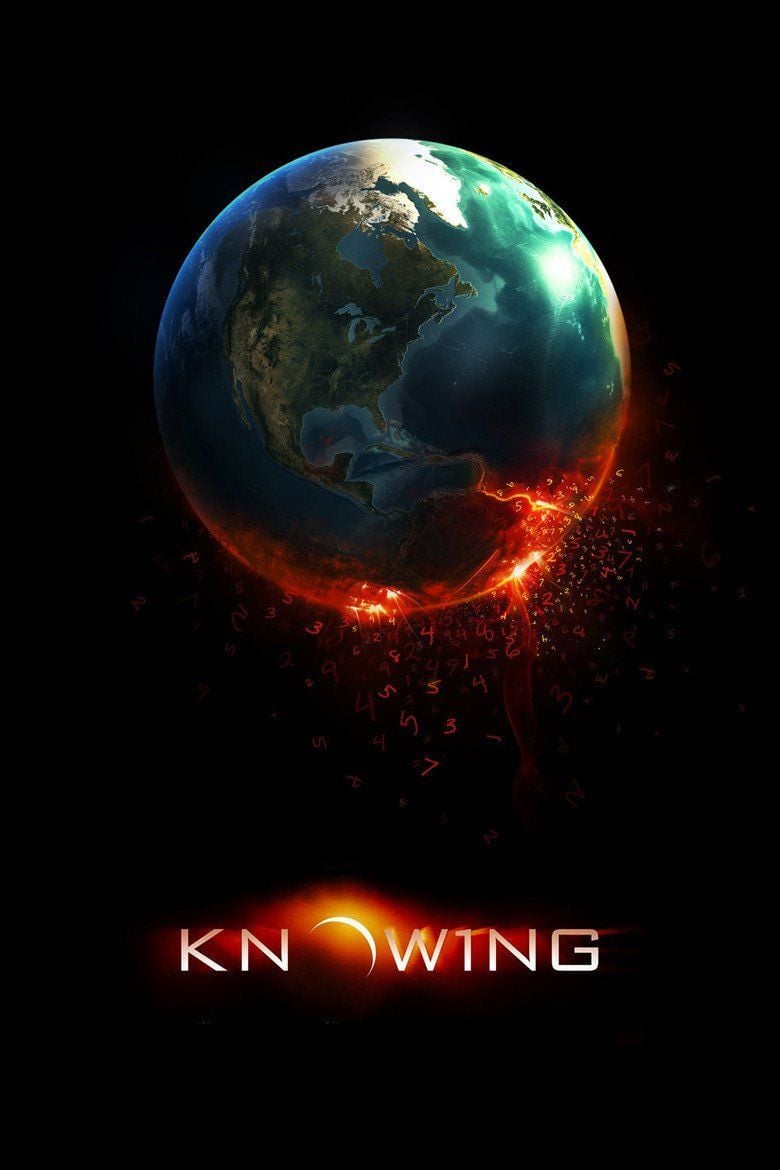 | ||||||||||||||||||||||||||||||||||
Release date March 20, 2009 (2009-03-20) Writer Ryne Douglas Pearson (screenplay), Juliet Snowden (screenplay), Stiles White (screenplay), Ryne Douglas Pearson (story) Genres Thriller, Drama, Science Fiction, Mystery Cast (John Koestler), (Diana Wayland), (Caleb Koestler), (Phil Bergman), (Grace Koestler), D.G. Maloney (The Stranger)Similar movies Independence Day , Salt , Southland Tales , Drillbit Taylor , Borgman , The Principal Tagline Knowing is everything... | ||||||||||||||||||||||||||||||||||
Knowing 2009 official trailer nicolas cage rose byrne movie hd
Knowing (stylized as KNOW1NG) is a 2009 science fiction thriller film directed by Alex Proyas and starring Nicolas Cage. The project was originally attached to a number of directors under Columbia Pictures, but it was placed in turnaround and eventually picked up by Escape Artists. Production was financially backed by Summit Entertainment. Knowing was filmed in Docklands Studios Melbourne, Australia, using various locations to represent the film's Boston-area setting.
Contents
- Knowing 2009 official trailer nicolas cage rose byrne movie hd
- Knowing 4 10 movie clip subway hell 2009 hd
- Plot
- Production
- Soundtrack
- Critical response
- Box office
- Home media release
- Litigation
- Science controversy
- Knowing 2 10 movie clip aerial cataclysm 2009 hd
- References
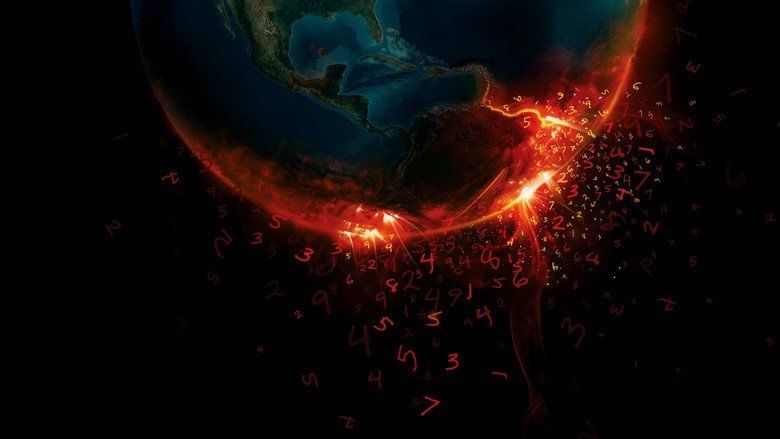
The film was released on March 20, 2009, in the United States. The DVD and Blu-ray media were released on July 7, 2009. Knowing met with mixed reviews, with praise for the acting performances, visual style and atmosphere, but criticism over some implausibilities.

Knowing 4 10 movie clip subway hell 2009 hd
Plot

In 1959, student Lucinda Embry hears whispers while staring at the Sun. When her idea to make a time capsule is chosen by the school, each child draws what they believe the future will look like. Lucinda writes a page of seemingly random numbers for the time capsule, which is to be opened in 50 years. Lucinda's teacher calls for the pupils to finish but Lucinda continues until her teacher takes the page off her desk unfinished. Lucinda goes missing after the time capsule is dedicated, and is found in a utility closet scratching numbers into the door with her fingernails bleeding.
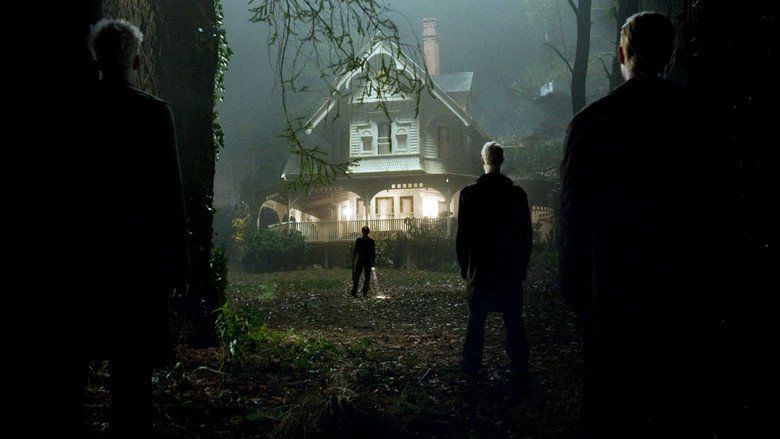
In 2009, Caleb Koestler is a student at the same elementary school. When the time capsule is opened, Caleb is supposed to read and write about some of the capsule's contents. He is given Lucinda's page of numbers. His widowed father John, an astrophysics professor at MIT, notices that the numbers have a set of sequences, with digits referring to the dates and death tolls of disasters over the last 50 years, including 911012996, apparently representing the date and death toll of the 9/11 attacks. The last three sets of digits on the page are dated in the immediate future.
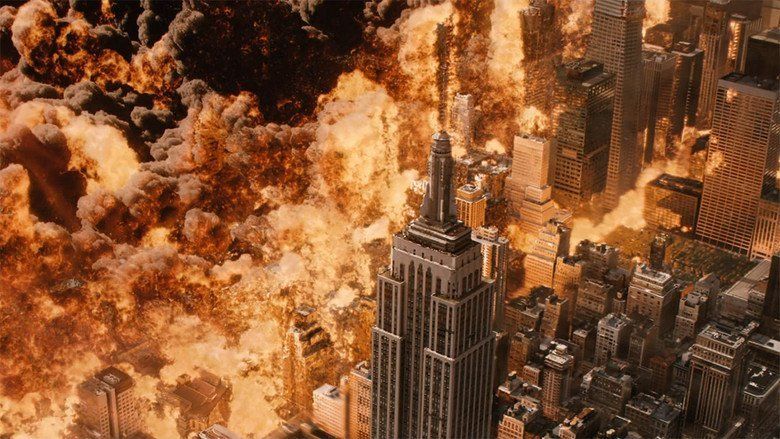
In the following days, a car drives by the family home containing two strangers. They give Caleb a small black stone.
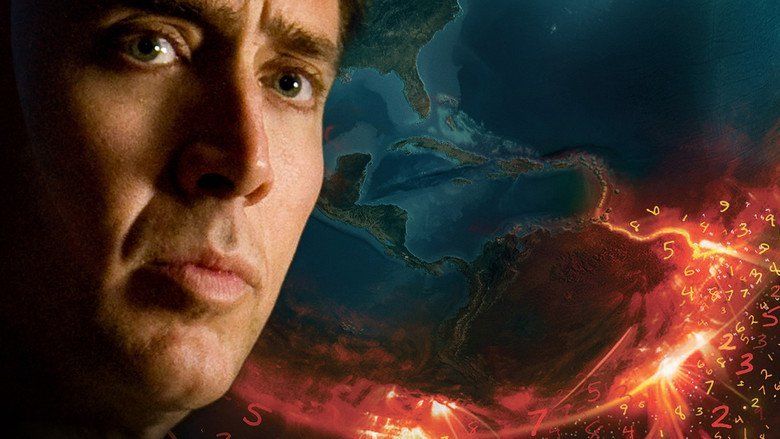
John witnesses a plane crash on a freeway on the day that the paper predicted that a disaster would occur. He unsuccessfully tries to save several victims. He then learns that the remaining unexplained digits on the paper are the geographic coordinates of the location of each disaster predicted on the paper. Caleb has a vision of one of the strangers in his bedroom. He looks through the window and sees the forest outside his room ablaze, with animals running from the fire.
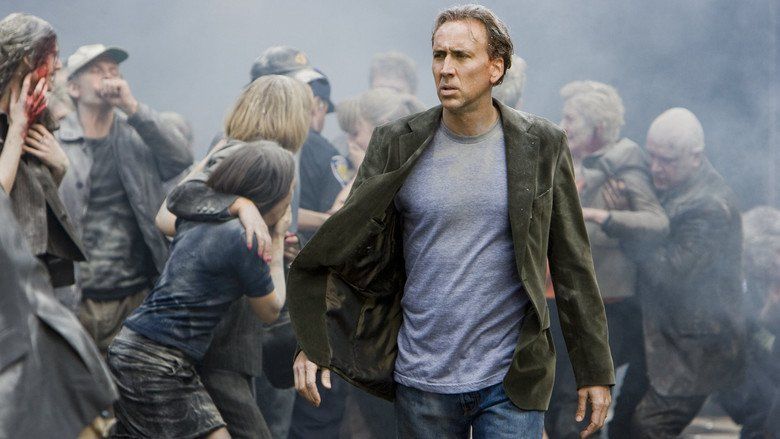
John tracks down Lucinda's daughter Diana and her granddaughter Abby. After hearing about the events that happened, she becomes apprehensive and scared. John then gives up his son to his sister. Soon afterward, a major derailment occurs on the New York City Subway, which John fails to prevent. Diana then believes John and visits him. She says that her mother used to hear voices, and that the next and last date in the document, October 19, was the day Lucinda always said Diana would die. Searching Lucinda's mobile home, they find pictures of the disasters she predicted, a copy of Matthäus Merian's engraving of Ezekiel's "chariot vision", and a pile of small smooth stones near Lucinda's bed. The last number in the document appears at first to be "33", but they notice that it is really "EE" written backward. They determine that EE means "Everyone Else", representing an Extinction Level Event.
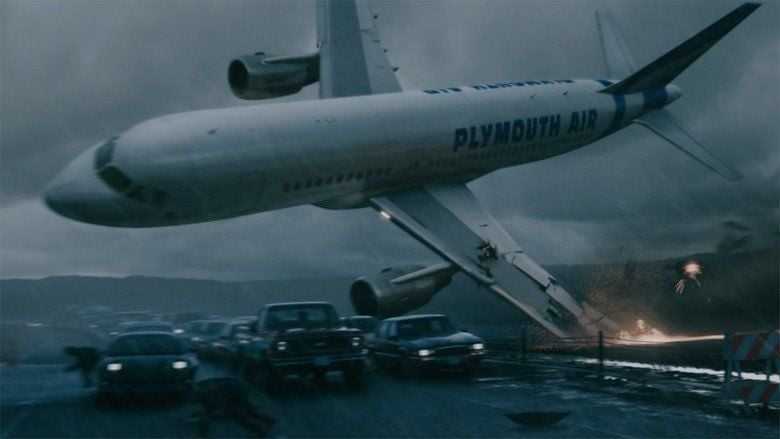
The next day, Abby shows John that she has colored in the sun on the Ezekiel's "Chariot vision" engraving. After seeing the image, John gets a revelation as he realizes that this could be how the world will end. He rushes them to the MIT observatory, where he discovers that a massive solar flare will soon reach Earth, making it uninhabitable. John and Diana argue over how to prepare for the solar flare. Diana leaves with both children. As Diana stops at a nearby gas station, an emergency broadcast is transmitted to alert the world of the solar flare. While Diana is on the phone with John, the strangers take the children. Diana chases after them but her car is hit by a truck. John, rushing to catch up with them, arrives just as Diana dies and finds the black stone in Diana's hand. He goes back to Lucinda's mobile home, finding the children and the strangers waiting in a dry river bed covered with similar black stones. A space ship descends from the sky. John is refused entry and the ship departs with the children. Many similar space ships leave the Earth.
The next morning, John drives to his estranged father's home. John and his family embrace as the flare ignites the Earth, killing all life on the surface. Caleb and Abby are deposited by the beings on an Earth-like planet.
Production
In 2001, novelist Ryne Douglas Pearson approached producers Todd Black and Jason Blumenthal with his idea for a film, where a time capsule from the 1950s is opened revealing fulfilled prophecies, the last one of which ended with 'EE' - "everyone else". The producers liked the concept and bought his script. The project was set up at Columbia Pictures. Both Rod Lurie and Richard Kelly were attached as directors, but the film eventually went into turnaround. The project was picked up by the production company Escape Artists, and the script was rewritten by Stiles White and Juliet Snowden. Director Alex Proyas was attached to direct the project in February 2005. Proyas said the aspect that attracted him the most was the "very different script" and the notion of people seeing the future and "how it shape their lives". Summit Entertainment took on the responsibility to fully finance and distribute the film. Proyas and Stuart Hazeldine rewrote the draft for production, which began on March 25, 2008 in Melbourne, Australia. The director hoped to emulate The Exorcist in melding "realism with a fantastical premise".
The film is set primarily in the town of Lexington with some scenes set in the nearby cities of Cambridge and Boston. However, it was shot in Australia, where director Proyas resides. Locations included the Geelong Ring Road; the Melbourne Museum; "Cooinda", a residence in Mount Macedon which was the location for all of the "home and garden" scenes; and Collins Street. Filming also took place at Camberwell High School, which was converted into the fictional William Dawes Elementary, located in 1959 Lexington. Interior shots took place at the Australian Synchrotron to represent an observatory. Filming also took place at the Haystack Observatory in Westford, Massachusetts. In addition to practical locations, filming also took place at the Melbourne Central City Studios in Docklands. The plane crash, which was mostly shown in one take in the film, was done in a nearly-finished freeway outside Melbourne, mixing practical effects and pieces of a plane with computer-generated elements. The scenographic rain led to the usage of a new gel for the flames so the fire would not be put out, and semi-permanent make-up to make them last the long shooting hours. The solar flare destruction sequence is set in New York City, showing notable landmarks such as the Metlife Building, Times Square and the Empire State Building being completely obliterated as the flare spreads across the Earth's surface, destroying everything in its path.
Proyas used a Red One 4K digital camera. He sought to capture a gritty and realistic look to the film, and his approach involved a continuous two-minute scene in which Cage's character sees a plane crash and attempts to rescue passengers. The scene was an arduous task, taking two days to set up and two days to shoot. Proyas explained the goal, "I did that specifically to not let the artifice of visual effects and all the cuts and stuff we can do, get in the way of the emotion of the scene."
Soundtrack
The music for the film was written by Marco Beltrami, but also features classical works such as Symphony No. 7 (Beethoven) - Allegretto, which is played without any accompanying sound effects in the final Boston disaster scene of the film. Beltrami released the soundtrack as a CD with 22 tracks.
Critical response
Knowing received mixed reviews. Rotten Tomatoes reported that 34% of critics gave the film positive reactions based upon a sample of 179 critics with an average rating of 4.7/10. The site's consensus states: "Knowing has some interesting ideas and a couple good scenes, but it's weighted down by its absurd plot and over-seriousness". Metacritic gave the film a score of 41% based on 27 reviews.
A. O. Scott of The New York Times gave the film a negative review and wrote, "If your intention is to make a brooding, hauntingly allegorical terror-thriller, it's probably not a good sign when spectacles of mass death and intimations of planetary destruction are met with hoots and giggles ... The draggy, lurching two hours of "Knowing" will make you long for the end of the world, even as you worry that there will not be time for all your questions to be answered." In the San Francisco Chronicle, Peter Hartlaub called the film "an excitement for fans of Proyas" and "a surprisingly messy effort." He thought Nicolas Cage "borders on ridiculous here, in part because of a script that gives him little to do but freak out or act depressed".
Writing for The Washington Post, Michael O'Sullivan thought the film was "creepy, at least for the first two-thirds or so, in a moderately satisfying, if predictable, way ... But the narrative corner into which this movie... paints itself is a simultaneously brilliant and exciting one. Well before the film neared its by turns dismal and ditzy conclusion, I found myself knowing—yet hardly able to believe—what was about to happen." Betsy Sharkey of the Los Angeles Times found it to be "moody and sometimes ideologically provocative" and added, "Knowing has its grim moments—and by that I mean the sort of cringe- (or laugh-) inducing lines of dialogue that have haunted disaster films through the ages ... So visually arresting are the images that watching a deconstructing airliner or subway train becomes more mesmerising than horrifying."
Roger Ebert of the Chicago Sun-Times was enthusiastic, rating it four stars out of four and writing, "Knowing is among the best science-fiction films I've seen—frightening, suspenseful, intelligent and, when it needs to be, rather awesome" He continued, "With expert and confident storytelling, Proyas strings together events that keep tension at a high pitch all through the film. Even a few quiet, human moments have something coiling beneath. Pluck this movie, and it vibrates." Ebert later listed it as the sixth best film of 2009.
Peter Bradshaw of The Guardian suggested Knowing was saved by its ending, concluding that "the film sticks to its apocalyptic guns with a spectacular and thoroughly unexpected finish." Philip French's review in The Observer suggested the premise was "intriguing B-feature apocalypse, determinism versus free will stuff" and that the ending has something for everyone: "A chosen few will apparently be swept away by angels to a better place. If you're a Christian fundamentalist who believes that Armageddon is nigh, you'll have a family hug and wake up to be greeted by St Peter at the Pearly Gates. On the other hand, Darwinists will be gratified to see Gaia and her stellar opposite numbers sock it to an unconcerned mankind."
Several reviewers derided the striking similarity between the film's ending and that of the Arthur C. Clarke novel, Childhood's End.
Box office
Knowing was released in 3,332 theatres in the United States and Canada on March 20, 2009 and grossed US$24,604,751 in its opening weekend, placing first at the box office. According to exit polling, 63% of the audience was 25 years old and up and evenly split between genders. On the weekend of March 17, 2009, Knowing ranked first in the international box office, grossing US$9.8 million at 1,711 theatres in ten markets, including first with US$3.55 million in the United Kingdom. As of July 26, 2009, the film had grossed US$79,957,634 in the United States and Canada and US$107,901,008 in other territories for a worldwide total of US$187,858,642.
Home media release
Knowing was released on DVD on July 7, 2009 opening at No.1 for the week, selling 773,000 DVD units for US$12,508,192 in revenue. As per the latest figures, 1,521,797 DVD units have been sold, bringing in US$22,968,367 in revenue. This does not include DVD/Blu-rentals or Blu-ray sales.
Litigation
On November 25, 2009, Global Findability filed a patent infringement lawsuit against Summit Entertainment and Escape Artists in the U.S. District Court for the District of Columbia, claiming that a geospatial entity object code was used in the film Knowing which infringed Patent US 7107286 Integrated information processing system for geospatial media . The case was dismissed on January 10, 2011.
Science controversy
Regarding the film's grounding in science, Director Alex Proyas said at a press conference, "The science was important. I wanted to make the movie credible. So of course we researched as much as we could and tried to give it as much authenticity as we could".
Ian O'Neill of Discovery News criticized the film's solar flare plot line, pointing out that the most powerful solar flares could never incinerate Earthly cities.
Erin McCarthy of Popular Mechanics calls attention to the film's confusion of numerology, the occult's study of how numbers like dates of birth influence human affairs, with the ability of science to describe the world mathematically to make predictions about things like weather or create technology like cell phones.
Steve Biodrowski of Cinefantastique refers to the film's approach as disappointingly "pseudo-scientific". He writes, "Cage plays an astronomer, and his discussions with a colleague hint that the film may actually grapple with the question of predicting the future, perhaps even offer a plausible theory. Unfortunately, this approach is abandoned as Koestler pursues the disasters, and the film eventually moves into a mystical approach".
Asked about his research for the role, Nicolas Cage stated, "I grew up with a professor, so that was all the research I ever needed". His father, August Coppola, was a professor of comparative literature at Cal State Long Beach. Cage plays an astrophysicist at MIT in the film.
Knowing 2 10 movie clip aerial cataclysm 2009 hd
References
Knowing (film) WikipediaKnowing (film) IMDbKnowing (film) Rotten TomatoesKnowing (film) Roger EbertKnowing (film) MetacriticKnowing (film) themoviedb.org
